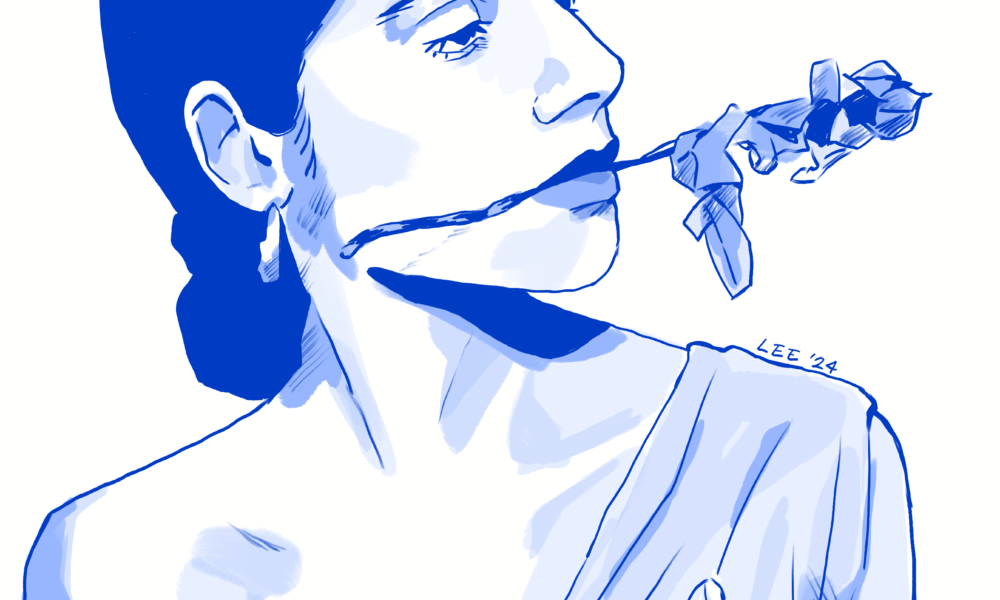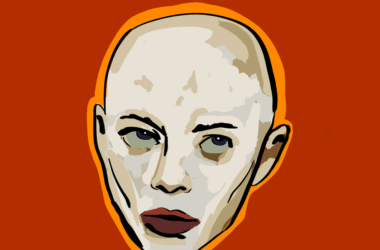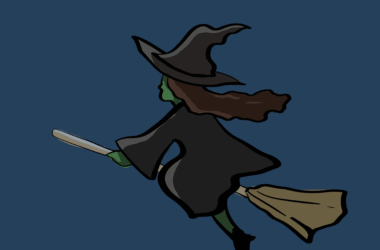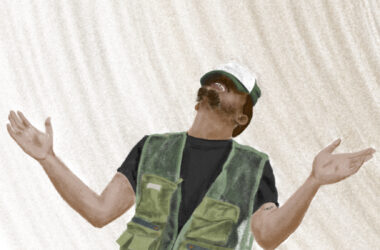Content warning: Mentions of sexual assault
Echoing bass drums underscore the whirring guitars howling from the speakers. Every note engulfs the concert hall, transforming its industrial architecture into a mystical unknown of looming trees contorted over muddy paths, mutating its narrow aisles into a shadowy trail, flanked by a curling mist. The wind becomes a voice of whispers, disheveling all that crosses its dusky path. Lambs bleat on the distant stage; birds coo from seeming nothingness. Down the sonic path, there appears a forest of possibility: A narrative of adolescent discovery; a contemplation of God’s existence on Earth’s barren landscape; a harkening back to England’s past. This is the auditory landscape of PJ Harvey’s I Inside the Old Year Dying.
On Saturday, Sept. 21, PJ Harvey electrified audiences with her first Montreal show in seven years. The tour is in support of her 2023 record, I Inside the Old Year Dying, a concept album inspired by her epic poem, “Orlam,” from the previous year. On stage, Harvey assumed the moniker Ira-Abel, a nine-year-old girl traversing into the Gore Woods, the fictional landscape setting for both the album and the poem. “Orlam” presents the woods as a narrative metaphor for Ira-Abel’s sexual assault and the subsequent world she imagines for herself in understanding the social implications of this experience. Harvey played the album in its totality, emphasizing the symbiotic nature of these songs. She embodied the burdening emotion of the young girl with her exaggerated stage presence, contorting her arms to musical beats into shields for what lies ahead, both mentally and physically.
Even in their most understated performances, such as the album’s title track, the band’s compatibility captured the essence of the physical land with seeming ease. Harvey played alongside her collaborator of 30 years, John Parish, whose whooshing guitar accompaniments coursed through the space like comets. The steady drums, sombre violin, and moody keyboard provided space for Harvey’s whistling vocals and spatial deformations to expand across the stage. Her lyrics, performed in the almost-lost Dorset dialect, warble through the still audience: “I laugh in the leaves and merge to meesh, just a charm in the woak with the chalky children of evermore.” With words taken directly from her poem of the same title, she provides the English translation beside the original in the book, which reads, “I laugh in the leaves and merge into moss, just a song in the oak with the chalky children of evermore.” Somehow, the meaning of the Dorset language is not lost to many ears, for Harvey fervently embodies the significance of every spoken word. The physicality of her performance was evidently symbolic of Ira-Abel’s girlhood as an object not to be lost but to be strewn into the nature of surrounding life.
With the climax of the album, Harvey’s performance was only half-done. She embodied each era with a passionate fashion of movement and vocal choice. She wielded her guitar as if a sword on early tracks like “Man-Size” and “Dress,” contrasting this vitriolic resentment with personifications of the ethereal “Angelene” and the lovelorn narrator of “Send His Love To Me.” Harvey’s effervescent delivery of these older tracks ignited the energy of the hall into that of nostalgia and elation. Crowds stood, chanting every word, just as they had done 30 years prior.
The whole night, PJ Harvey shapeshifted into figments of her songs, transporting the audience into unknown territory with each lyric. Her power as a storyteller lies in her embodiment of all that she produces; the music flows within her, extracting itself with every movement and note cast down from the stage. Harvey’s talent as a songwriter and performer is evident, for the language of her music bounds into phantasmal realities similar to no other.
PJ Harvey’s music can be found on all music platforms.







